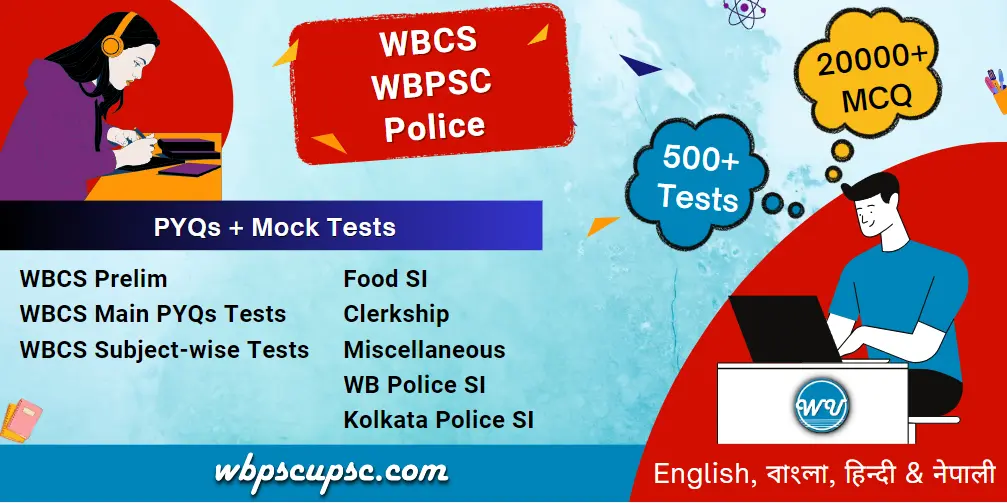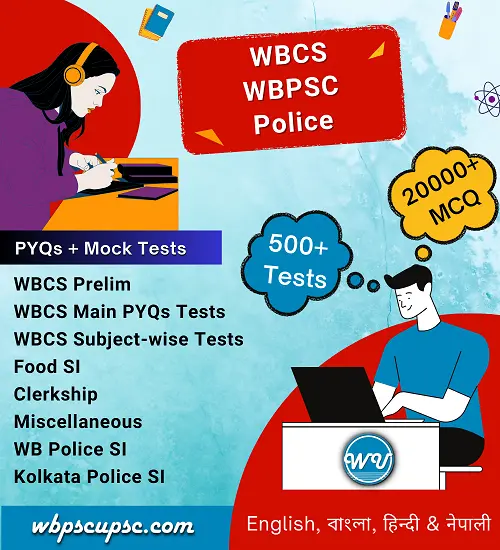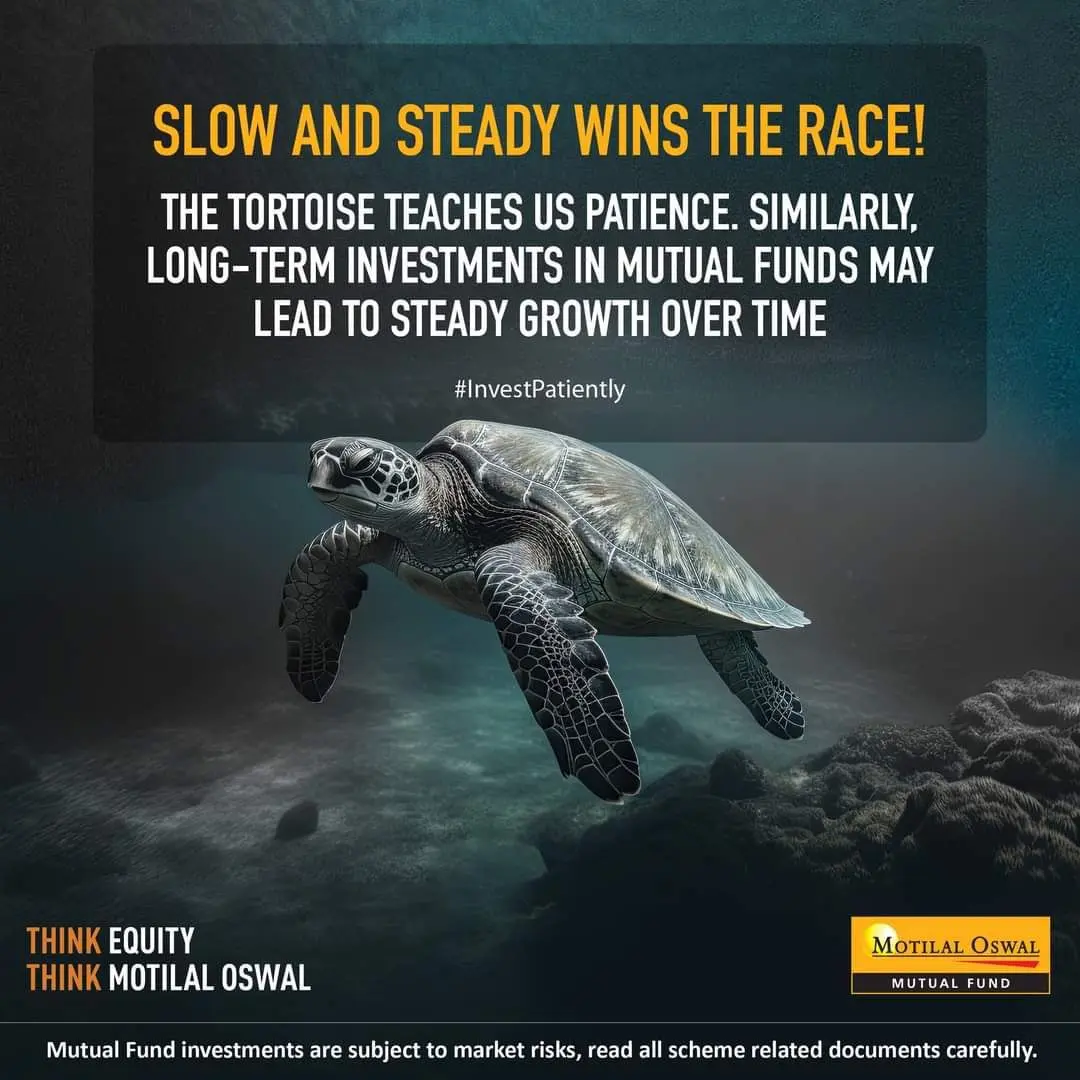(A) Its volume decreases.
(C) Its volume remains unchanged.
(D) Its volume may increase or decrease depending upon the nature of the metal.
WBCS Preliminary Question – 2019
(projectile motion)
(A) the bomb traverses a curved path and falls some distance behind that point.
(B) the bomb traverses a curved path and falls some distance ahead.
(C) the bomb drops vertically downward.
(D) the bomb remains stationary in the air for some time.
(A) poor emitters
(B) non-emitters
(C) good emitters
(D) highly polished
(A) to bring oxygen for breathing.
(B) so that sunlight may enter the room.
(C) to maintain convectional currents to keep the air fresh in the room.
(D) to provide an outlet for carbon dioxide.
(A) pitch
(B) quality
(C) intensity
(D) velocity
(9 trillion km)
(A) light emitted by sun in one year.
(B) time taken by light to travel from Sun to Earth.
(C) the distance travelled by light in free space in one year.
(D) time taken by earth to go once around the Sun.
(turbulence in atmosphere)
(A) large distance of stars and storms in air.
(B) rotation of the earth.
(C) large size of stars.
(D) large distance of stars and fluctuations in the density of air
(Bernoulli’s Equation)
(A) of the increase in air pressure in the space between them.
(B) of decrease in the velocity of air molecules between them.
(C) of decrease in air pressure in the space between them.
(D) of the increase in the velocity of air molecules between them.
(A) 70-75 dB
(B) 50-60 dB
(C) 80-99 dB
(D) 40-65 dB
(A) 45°
(B) 30°
(C) Zero
(D) 90°
WBCS Preliminary Question – 2018
(James Clerk Maxwell)
(a) Frequency
(b) amplitude
(c) wavelength in vacuum
(d) speed in vacuum
(a) solids
(b) liquids
(c) gases
(d) vacuum
(a) increase
(b) decrease
(c) remains same
(d) None of the above
(myopia)
(a) Convex lens
(b) Concave Lens
(c) Converging lens
(d) None of the above
(a) White
(b) Black
(c) Maroon
(d) Blue
(a) word
(b) nibble
(c) memory block
(d) byte
(Centripetal Force)
(a) The stone flies off tangentially
(b) The stone moves radially outward
(c) The stone moves radially inward
(d) None of the above
(a) will continue to float as before
(b) floats with a greater part immersed
(c) floats with lesser part immersed
(d) will sink
(a) Primary
(b) Secondary
(c) Tertiary
(d) None of the above
(a) Java
(b) C++
(c) C
(d) PHP
(9 Sept 1947)
(a) Spam
(b) Follies
(c) Virus
(d) Bugs
WBCS Preliminary Question – 2017
(1 Å = 10-10 meters)
(A) 10 A
(B) 100 A
(C) 10 micron.
(D) 01 mm A
(A) Radio Detection and Ranging
(B) Ready Advanced Appliance for Ranging
(C) Range Detection Appliance Ranging
(D) Ready Advanced Airplane Ranging
(A) only rotational motion
(B) only translational motion
(C) neither the rotational nor the translational motion
(D) rotational as well as translational motion
(Water = 0.072 N/m)
(A) surface tension of water
(B) viscosity of water
(C) elasticity of hair of the brush
(D) temperature difference between air and water
(wavelength 620-750 nm)
(A) blood is red
(B) red light is scattered least by the air molecules
(C) red colour is easily available
(D) red colour is soothing for eye
(A) 8/9th of its volume
(B) 9/10th of its volume
(C) 10/12th of volume
(D) 11/12th of volume
(A) in series
(B) in parallel
(C) either in series or in parallel
(D) both in series and in parallel
WBCS Preliminary Question – 2016
(1895, Wilhelm Röntgen, Germany )
(A) electromagnetic radiations of very short wavelength
(B) beams of electrons
(C) electromagnetic radiations of very long wavelength
(D) visible to the naked eye
(A) Moon
(B) Stars
(C) Sky
(D) Sun
(A) Elasticity
(B) Surface tension
(C) Viscosity
(D) its density
(A) real and erect
(B) virtual and inverted
(C) virtual and erect
(D) real and inverted
(A) Nuclear fusion
(B) Nuclear fission
(C) Radioactive decay
(D) Photo-electric effect
(A) first increases and then decreases
(B) remains the same
(C) increases
(D) decreases
(A) Gravitational force
(B) Frictional force
(C) Electrostatic force
(D) Magneto static force
(A) Conduction
(B) Convection
(C) Radiation
(D) None of the above
WBCS Preliminary Question – 2015
(A) Bolometer
(B) Pyrometer
(C) Greenhouse
(D) Galvanometer
(Joseph Bramah, 1795)
(A) Archimedes’ law
(B) Pascal’s law
(C) Reynold’s law
(D) Bernouli law
(A) Light emitting device
(B) Light emitting diode
(C) light encapsulated device
(D) light emitting dots
(A) + 40°
(B) + 20°
(C) – 20°
(D) – 40°
(A) Its mass increases
(B) Both its mass and weight change
(C) Its weight increases
(D) Its weight decreases
157. Satellites provide information about
(A) Forest and vegetative cover
(B) Rivers and their courses
(C) Advancing storms and cyclones
(D) All of the above
WBCS Preliminary Question – 2014
(A) two lenses
(B) requires UV light source
(C) used to view only dead organisms
(D) requires large room space
(A) Metre
(B) Furlong
(C) Acre
(D) Mile
(Paul Villard, 1900)
(A) Alpha ray
(B) Beta ray
(C) Gamma ray
(D) X-ray
(Radio Detection And Ranging)
(A) locating submerged submarines.
(B) receiving signals in a radio receiver.
(C) locating geostationary satellites.
(D) detecting and locating the position of objects such as aeroplanes.
(mechanical wave)
(A) Transverse
(B) Longitudinal
(C) Electromagnetic
(D) Polarized
(A) Liquid Crystal Display
(B) Low Current Display
(C) Light Circuit Display
(D) None of the above
(same voltage)
(A) parallel connection
(B) series connection
(C) combination of series and parallel connections
(D) None of the above
149. The heat required to raise the temperature of a body by 1 K is called
(Heat capacity)
(A) Specific heat
(B) Thermal capacity
(C) Water equivalent
(D) None of the above
(A) Principle of Refraction
(B) Total Internal Reflection
(C) Scattering
(D) Reflection
WBCS Preliminary Question – 2013
(A) Force
(B) Momentum
(C) Energy
(D) Power
(A) Electron
(B) Proton
(C) Deuteron
(D) Alpha particle
34. An ice cube containing a large bubble of air is floating in water contained in a large beaker. When the ice melts completely, the level of water will : (A) Remain unchanged
(B) Go down
(C) Rise
(D) First rise and then go down
(A) Reduce the surrounding temperature
(B) Connect the mouth of the flask to an evacuating system
(C) Supply heat from a less intense source
(D) Connect the mouth of the flask to a compressor
(ferromagnetic metal)
(A) A glass shield
(B) A rubber shield
(C) A brass shield
(D) An iron shield
WBCS Preliminary Question – 2012
(17 Mar 1988, Vostok rocket, Kazakhstan)
(A) P6
(B) P4
(C) IRS 1A
(D) CARTOSAT 1
(A) Microscope
(B) Stereoscope
(C) Parallax bar
(D) Theodolite
107. An object moving with a constant speed on a horizontal surface will not have : (A) Velocity
(B) Momentum
(C) Kinetic energy
(D) Acceleration
(rad is SI unit of angle)
(A) Light year
(B) Micron
(C) AU
(D) Radian
(A) White rough surface
(B) Black rough surface
(C) White smooth surface
(D) Black smooth surface
( -273.15° C = 0 Kelvin)
(A) Water freezes to ice
(B) All molecules of water comes to rest
(C) All matter stays in the solid state
(D) Kinetic and potential energies of the molecules become equal to each other
123. A clear piece of glass immersed in a glycerol cannot be seen separately because in comparison to the refractive index of glycerol, the refractive index of glass is : (glycerol = 1.47, Glass = 1.5)
(A) Greater
(B) Lesser
(C) Nearly equal
(D) This does not depend on the refractive index
130. Gold has an extraordinarily high density than silver, the reason is : (G = 19.3 g/cc, S = 10.49 g/cc)
(A) Higher mass number of gold
(B) Higher atomic number of gold
(C) High screening effect
(D) Lanthanide contraction
(A) Electrons flow from conductor to earth
(B) Protons flow from conductor to earth
(C) Electrons flow from earth to conductor
(D) Protons flow from earth to conductor
(300 MHz to 300 GHz)
(A) Infra-red rays
(B) Ultra violet rays
(C) Microwaves
(D) X-rays
WBCS Preliminary Question – 2011
(no direction)
(A) Velocity
(B) Force
(C) Momentum
(D) Energy
34. A piece of metal plate with a circular hole is heated. If the metal plate expands on heating, the diameter of the hole will (A) Increase
(B) Decrease
(C) Increase or decrease depending on the diameter of the hole
(D) Increase or decrease depending upon the material of the plate
35. The volume of a vessel containing an ideal gas is doubled and its temperature (in °K) is also doubled. The pressure of the gas (A) Remains unchanged
(B) Is doubled
(C) Is one-fourth of the original pressure
(D) Is four times the original pressure
54. A spring has length l and spring constant K. It is cut into two pieces of lengths l1 and l2 . If l1 = nl2 , the spring constant of the spring of length l1 is (A) K(l + n) / n
(B) K(l + n)
(C) Kn / (l + n)
(D) K / (l + n)
55. Two copper wires A and B have the same weight and the radius of B is half that of A. The ratio RA/RB of their resistances is (Specific Resistance)
(A) 1/4
(B) 1/8
(C) 1/16
(D) 1/2
(A) Fission
(B) Fusion
(C) Spallation
(D) Neutron absorption
(G = 6.674×10−11 m3 s-2 kg-1)
(A) cm 4 sec-1 gm-2
(B) cm sec-3 gm-2
(C) cm 3 sec-2 gm-1
(D) gm cm-3 sec-2
(A) More than 4f
(B) Less than 4f
(C) Equal to 2f
(D) Equal to 4f
(A) Blue light
(B) Orange light
(C) Green light
(D) Red light
WBCS Preliminary Question – 2010
(A) White
(B) Smooth
(C) Smooth but black
(D) Rough but black
38. The minimum number of artificial satellites required for communication throughout the globe is (A) 1
(B) 2
(C) 3
(D) 4
56. A tube-well will not work if the depth of water below the ground is (A) 20 ft.
(B) 25 ft.
(C) 28 ft.
(D) 38 ft.
62. Consider the following statement
2. Definition of force is obtained from Newton’s second law of motion.
(A) Only 1 is correct
(B) Only 2 is correct
(C) Only 2 and 4 are correct
(D) Only 1 and 4 are correct
(A) Thermostat
(B) Motor
(C) Dynamo
(D) Rectifier
(A) Gravitation
(B) Viscosity
(C) Elasticity
(D) Capillarity
185. Same force is applied to two bodies A and B of masses m and 5 m respectively for the same time. Then (momentum = mass X velocity)
(A) Velocity of A and B will be same
(B) Momentum of A and B will be same
(C) Momentum of A will be greater
(D) Momentum of B will be greater
WBCS Preliminary Question – 2009
(A) Maximum at the centre of the earth
(B) Maximum at infinity
(C) Maximum at the surface of the earth
(D) Name everywhere from the center of the earth to infinity
38. A small quantity of water is placed in a small cavity made in a block of ice at 0°C. What will happen to the water ? (A) The water will freeze to ice at 0°C
(B) There will be no change in the temperature of water
(C) The temperature of water will decrease to 0°C but it will not freeze
(D) The water will freeze to ice if the block of ice is large compared to the mass of water
(A) Transmit sound
(B) Absorb sound
(C) Reflect sound
(D) Amplify sound
(A) X-rays
(B) y-rays
(C) Ultraviolet rays
(D) Infra-red rays
WBCS Preliminary Question – 2008
(A) Copper
(B) Iron
(C) Silicon
(D) Mercury
111. The weight of a body on the surface of the earth is 10 kg. Its
weight at the center of the earth is
(A) 0 kg
(B) 5 kg
(C) 10 kg
(D) Infinite
(A) Phi-phenomenon
(B) Autokinetic effect
(C) Saccadic movement
(D) Purkinje shift
(A) 400 Ω
(B) 400 Ω only when it is connected to 200 volt mains
(C) 400 Ωwhen it is not glowing
(D) 2 Ω
(1921)
(A) Photoelectric equation
(B) Special theory of relativity
(C) General theory of relativity
(D) Explanation of Brownian motion
(A) Radio wave
(B) X-ray
(C) Visible light
(D) Sound wave
151. Two ends of tube is closed by corks so that the tube becomes airtight. The pressure of air inside the closed tube is
(A) Very small
(B) Slightly less than the atmospheric pressure
(C) Equal to the atmospheric pressure
(D) Dependent on the length of the tube
(A) Red, green, blue, yellow
(B) Red, blue, green
(C) Yellow, blue, red, grey
(D) None of the above
(A) Plane mirror
(B) Concave mirror
(C) Convex mirror
(D) Convex lens
WBCS Preliminary Question – 2007
(A) First type of lever
(B) Second type of lever
(C) Third type lever
(D) Simple machine
73. The screen of a cinema hall is
always white and rough. Because light rays of all colours falling on the screen suffer
(diffused reflection)
(A) Total absorption
(B) Total reflection
(C) Refraction
(D) Scattering
(A) 0°C
(B) 100°C
(C) 4°C
(D) 10°C
152. The motion of which particle through a metallic wire is called
electric current ?
(A) Electron
(B) Positron
(C) Neutron
(D) Photon
180. When a
loaded and an empty trucks of identical specifications are moving with same velocity, more force is required to stop the loaded truck. Which of the following laws is proved by this action?
(A) Newton’s first law of motion
(B) Newton’s second law of motion
(C) Newton’s third law of motion
(D) Gravitational law
(a) Insulators
(b) Conductors
(c) Metals
(d) Semi-conductors
(a) Increase
(b) Remain same
(c) Decrease
(d) Fluctuate
WBCS Preliminary Question – 2006
(a) Temperature
(b) Velocity
(c) Linear momentum
(d) Kinetic energy
(a) Kinetic energy
(b) Potential energy
(c) Electrical energy
(d) Magnetic energy
(a) 0°C
(b) Less than 4°C
(c) 4°C
(d) More than 4°C
(a) Decreases
(b) Increases
(c) Remains constant
(d) None of the above
(a) Circular motion
(b) Translational motion
(c) Oscillatory motion
(d) Rotational motion
(a) 2 hours
(b) 4 hours
(c) 4 hours
(d) 3 hours
(a) 0°
(b) 90°
(c) 45°
(d) angle of incidence
(Regelation)
(a) Refrigeration
(b) Radiation
(c) Revelation
(d) None of the above
WBCS Preliminary Question – 2005
37. Which one of these is not a measuring instrument?
(a) Barometer
(b) Thermometer
(c) Picometer (unit of length)
(d) Hygrometer
103. Both ends of the tube of a Telescope have
(a) convex lens
(b) concave lens
(c) piano convex lens
(d) piano concave lens
130. Dentists use
(a) Special Mirror
(b) Plane Mirror
(c) Concave Mirror
(d) Convex Mirror
168. X-ray fails to pass through
(a) Flesh
(b) Bone
(c) Iron
(d) Gold
WBCS Preliminary Question – 2004
27. The temperature of two bodies being equal means
(A) Their heat contents are the same
(B) When they are brought in contact there will be no exchange of heat
(C) Their heat capacities are the same
(D) Their specific heats are the same
31. If the length and cross-section of a wire are both doubled the resistance will
(A) increased 8 times
(B) decreases 4 times
(C) increase twice
(D) remain unchanged
40. In simple harmonic motion the kinetic energy
(A) is never zero
(B) becomes zero twice in every period
(C) is zero in the mean position
(D) is always constant
51. 10 gm. of ice at 0°C is mixed with 10 gm of water at 10°C. The temperature of the mixture will be
(A) 1°C
(B) 5°C
(C) 10°C
(D) 0°C
52. The specific resistance of a conductor depends on its
(A) length
(B) width
(C) temperature
(D) shape of the cross-section
54. When a ship enters the sea from a river, it floats up because
(A) Sea water is warmer
(b) the speed of the ship on the sea is greater
(c) the density of the river water is greater
(d) salt water of the sea is denser
65. A raindrop falls with a uniform velocity
(A) its potential energy remains constant
(B) its mechanical energy is constant
(C) its mechanical energy is transferred of the atmosphere
(D) the total energy of the drop and air drop and air decays
70. Mass of a body is defined by the following quantity
(A) velocity/acceleration
(B) applied force/velocity
(C) applied force/acceleration
(D) applied force/increased in momentum .
72. The period of rotation of an artificial earth satellite
(A) depends on its distance from the earth’s surface
(B) is proportional to its distance from the earth’s centre
(C) is inversely proportional to its mass
(D) 24 hours
82. The only vector quantity among the following is
(volts/meter)
(A) electric charge
(B) electric potential
(C) electric field intensity
(D) electric resistance
86. If a magnet is moved fast toward a coil, the induced electromotive force does not depend on
(A) the number of turns of the coil
(B) pole strength of the magnet
(C) the speed of the magnet
(D) the resistance of the coil
89. In a p-type semiconductor, which is the main carrier of electricity?
(A) Positive holes
(B) positive ions
(C) Electrons
(D) Negative ions
98. A ball is dropped from a given height. If its collision with the ground is fully elastic, it will reach a height
(A) less than before
(B) same as before
(C) more than before
(D) height will not depend on elasticity
100. Of the following which is different from the others?
(A) Cathode rays
(B) Photo electrons
(C) X-rays
(D) Thermal electrons
105. The current on a 100W, 220V electric bulb is
(I = P / V)
(A) 2.2 amp.
(B) 1.1 amp.
(C) 5/11 amp.
(D) 22000 amp.
136. If red light used to illuminate a green leaf and a red flower, it will appear as
(A) Green leaf and red flower
(B) Red leaf and red flower
(C) Black leaf and red flower
(D) Black leaf and black flower
137. The magnetic length of a bar magnet means
(A) its total length
(B) The distance between its two poles
(C) its width
(D) the distance of a pole from the centre
148. A rocket leaves the earth, lands on the moon and returns to earth. It will require the maximum energy to
(A) rise from the earth
(B) land on the moon
(C) rise from the moon
(D) land on the earth
149. The production of shadow proves that
(A) light travels approximately in straight lines
(B) light is an electromagnetic wave
(C) light is a type of particle
(D) light does not diffract
159. A bimetallic strip of iron and brass bends while heated because
(A) iron and brass have different specific heats
(B) their coefficients of linear expansion are different
(C) While heated their temperatures become different
(D) iron and brass become soft when heated
171. A piece of stone to a string is being rotated in a vertical plane with constant angular velocity. The tension of the string will be maximum when
(A) the stone is in the highest position
(B) the stone is in the lowest position
(C) the string is horizontal
(D) the tension is always the same
172. A magnifying glass or a simple microscope produces a
(A) magnified real image
(B) virtual image near the eye, having the same size as the object
(C) magnified virtual image
(D) diminished virtual image
191. Which of the following colours does not match the sequence?
Violet, Brown, Green, Red
(A) Green
(B) Red
(C) Brown
(D) Violet
WBCS Preliminary Question – 2003
73. Viscosity of a liquid
(A) Increases with increase in temperature
(B) Decreases with increase in temperature
(C) Independent of temperature
(D) Decreases with increase in pressure
113. Which one will you use to correct myopic vision ?
(A) Sphero-cylindrical lens
(B) Concave lens of suitable focal length
(C) Convex lens of proper power
(D) Convex spectacle lens of suitable focal length
(A) Gravitational Force
(B) Electromagnetic force
(C) Nuclear force
(D) Electrostatic force
143. What is increased in the step-down transformer?
(A) Voltage
(B) Current
(C) Wattage
(D) Current density
163. When water cools from 7°C to 1°C –
(A) It contracts only
(B) It expands only
(C) It first contracts and then expands
(D) It first expands and then contracts
183. Blue colour of the sky is due to
(A) Reflection
(B) Refraction
(C) Scattering
(D) Dispersal
WBCS Preliminary Question – 2002
71. With an ordinary balance we measure
(A) Volume
(B) Mass
(C) Weight
(D) Density
96. A simple microscope was first invented by
(A) Robert Hook
(B) Leeuwenhoek
(C) Purkinje
(D) Robert Brown
164. Some automobiles have additional yellow head lights. This is so because
(A) Yellow light consumes less power
(B) Yellow light does not produce dazzling effect in the eyes of the pedestrians
(C) Yellow light is able to penetrate fog, thus it is able to illuminate the road better in foggy nights
(D) The automobile looks more imposing with yellow head lights.
WBCS Preliminary Question – 2001
51. Select the best response:
One should wear coloured dress in winter because
(A) they look colourful
(B) they are cheaper
(C) they absorb heat
(D) it is easy to wash them
58. An iron ball and a wooden ball of the same mass are released from a height in air. Neglecting viscous drag of air
(A) iron ball will hit the ground earlier
(B) wooden ball will hit the ground earlier
(C) there is equal probability for the wooden and iron ball to hit the ground earlier
(D) both will reach the ground at the same time
67. A glass bulb is balanced by a brass weight on a sensitive beam balance. Now the balance is covered by a bell-jar which is then evacuated :
(A) the beam will continue to remain horizontal
(B) the pan containing the bulb will go up
(C) the pan containing the bulb will go up or down depending on the degree of vacuum produced
(D) the pan containing the bulb will go down
89. The emf of a cell does not depend on
(A) the size of the cell
(B) the material of cathode
(C) the material of anode
(D) electrolyte used
WBCS Preliminary Question – 2000
22. The weight of an iron ball on earth is 12 Kg. Its weight on moon will be
(A) 18kg.
(B) 9 kg.
(C) 12 kg.
(D) 2 kg.
26. A red rose when seen in green light appears
(A) Red in colour
(B) Green in colour
(C) White in colour
(D) Black in colour
27. In International System of Units (S.I) number of supplementary units is
(A) 2
(B) 3
(C) 4
(D) Many
28. A balloon filled with hydrogen bursts on reaching high altitude because.
(A) Pressure inside balloon becomes less
(B) Pressure inside balloon becomes more
(C) Surface of the balloon gets melted
(D) It is a natural phenomenon
29. X-rays are
(A) Electromagnetic Wave
(B) Electromagnetic wave of short wavelength
(C) None of the above
(D) Electromagnetic wave of long wavelength
32. A man presses the earth least when he is
(A) Standing
(B) Siting
(C) Running
(D) Lying flat
wbcs science mcq





